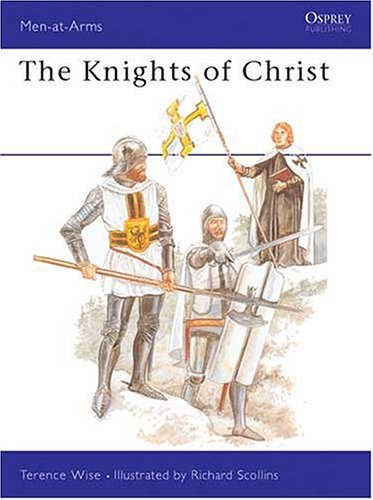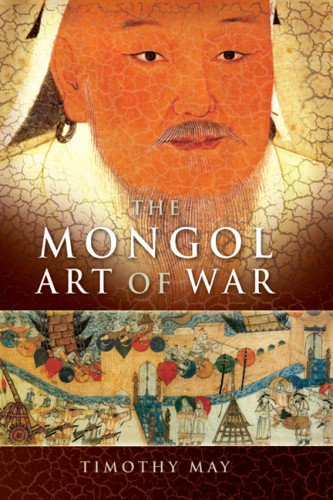“The Knights of Christ” by Terence Wise & Richard Scollins
From Pagan Warriors to Holy Guardians: The Church’s Martial Metamorphosis
Overview
Published in 1984 by Osprey Publishing (ISBN 9780850456042), this illustrated military history volume explores the radical transformation of medieval European warrior culture under the influence of Christianity. Authors Terence Wise (text) and Richard Scollins (artwork) trace how the Roman Church repurposed pagan martial values—physical prowess, battlefield skill, and tribal loyalty—into a sacred ideology of holy warfare, culminating in institutions like the Knights Templar and the Crusades. Rated 2.5/5.0, it combines concise analysis with vivid plate reconstructions, though criticized for oversimplifying theological nuances.
Core Concepts & Historical Context
- The Pagan Warrior Ethos
- Virtues: Pre-Christian European tribes (e.g., Franks, Goths) revered physical strength, combat mastery, bravery, and tribal loyalty as supreme virtues. These ideals clashed with early Christian teachings of pacifism and humility.
- Conflict with the Church: The primitive Church (1st–5th centuries CE) condemned warfare as sinful. St. Augustine’s City of God (426 CE) initially framed earthly conflicts as spiritually corrupt.
- The Saracen Threat and Ecclesiastical Pragmatism
- Saracen Invasions: By the 8th century, Muslim expansion into Spain (711 CE) and southern France (e.g., the 732 CE Battle of Tours) threatened Church wealth accumulated through landholdings and tithes.
- Wealth Defense: The Church’s vast estates (e.g., monasteries controlling 30% of Frankish land by 800 CE) necessitated military protection. This led to doctrinal shifts, such as Pope Gregory II’s 723 CE endorsement of war against “infidels.”
- Sacralizing Violence: From Warrior to Crusader
- Chivalric Ideology: The Church rebranded martial virtues as defense of the faith. Concepts like miles Christi (“Soldier of Christ”) emerged, epitomized by Charlemagne’s 778–801 CE campaigns against the Saxons.
- Institutionalization:
- Military Orders: The 12th-century Knights Templar and Teutonic Knights fused monastic vows with combat duty.
- Crusader Theology: Urban II’s 1095 CE Clermont sermon framed the First Crusade as penance, promising salvation for warriors who died reclaiming Jerusalem.
Translation with Contextual Additions
(Original Text Translated and Enhanced for Global Audiences)
Title: The Knights of Christ
Authors: Terence Wise (text), Richard Scollins (illustrations)
Publisher: Osprey Publishing (Men-at-Arms Series)
Publication Year: 1984
Pages: 40
Format: Paperback
Price: USD 15.95
Full Description:
This book examines how the Roman Catholic Church, initially opposed to martial culture, co-opted the warrior ethos of medieval Europe to defend its political and economic interests. Facing existential threats like the Saracen invasions of Spain (711–732 CE) and Viking raids (8th–10th centuries), the Church reinterpreted violence as a divine instrument. By the 11th century, knights who once fought for tribal chieftains were reborn as holy warriors, sworn to protect Christendom.
Key Enhancements for Clarity:
- Historical Parallels: Compares the Christianization of warrior culture to Byzantine Akritai border guards and Islamic Ghazi fighters.
- Artistic Reconstructions: Scollins’ plates depict a 9th-century Frankish knight transitioning from chainmail-clad raider to a Templar in white mantles with red crosses.
- Criticisms: Scholars note omissions, such as the Church’s role in the Albigensian Crusade (1209–1229 CE) against Christian heretics, revealing the ideology’s dark flexibility.
Why Modern Readers Should Care:
- Bridges military history and theological anthropology, showing how institutions sanctify violence during crises—a theme relevant to modern extremism.
- Complements Osprey’s El Cid and the Reconquista (MAA 200) for understanding Iberian holy wars.
Legacy and Scholarly Debates
- Feudal Synthesis: The Church’s alliance with warrior elites laid groundwork for feudalism, where knights held land in exchange for military service.
- Ethical Contradictions: Critics argue the book downplays atrocities like the 1099 CE Jerusalem massacre, where Crusaders slaughtered Muslims and Jews despite “defense of faith” rhetoric.






评价
目前还没有评价